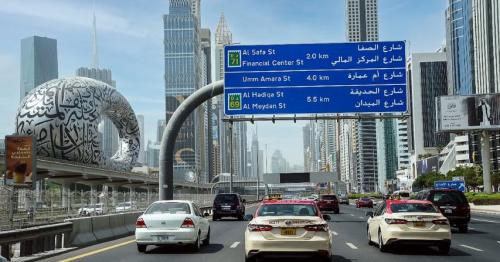UAE Tenants Prefer Larger Units Amid Traffic Surge

In the UAE, tenants are choosing to relocate to more spacious and upscale units within their emirates, defying the increasing traffic between Dubai, Sharjah, and Abu Dhabi. While historical trends saw residents moving to Dubai to escape traffic during economic booms, current real estate industry insights indicate a shift towards better rental rates and larger property sizes within the same emirate.
Traffic congestion between emirates has surged as the country's population has significantly grown, attracting more foreign workers. Dubai alone witnessed a population increase of 100,000 in the last year, reaching 3.65 million. Despite the heavy inter-emirate traffic, tenants are opting for better rental rates and larger living spaces.
Alina Adamco, Head of Sales at Metropolitan Homes, notes a substantial number of tenant relocation requests driven by various factors. These include moving to newer buildings and communities, transitioning to larger properties, shifting from apartments to townhouses and villas, and moving from crowded areas to those with superior infrastructure.
Despite the traffic challenges, residents are willing to endure them to reap the benefits of improved living conditions within the same emirate. Jacob Bramley, Leasing Manager at Betterhomes, observes that while many people commute from Sharjah or Abu Dhabi to work in Dubai, they choose to reside in their preferred emirate due to proximity to family or personal preferences.
While there is increased demand for relocation within Dubai, there is comparatively less demand for residential communities in Sharjah and other emirates, according to Bramley. The trend suggests that residents are prioritizing factors beyond traffic convenience, such as family proximity and personal preferences.
Alina Adamco highlights a shift in property market dynamics, with more buyers acquiring homes for personal use and relocating their families. This shift has led to a decrease in available rental properties, contributing to a noticeable rise in rental prices. Additionally, increased occupancy rates across communities are placing pressure on existing infrastructure, potentially leading to longer commute times and heightened traffic congestion.
The real estate market in Dubai experienced a surge in rental prices in 2023, recording a 24% increase in the average rental price of new tenancies. The rising prices have resulted in higher tenant retention rates, with occupants choosing to renew their contracts instead of seeking new housing. Betterhomes reports an 18% decline in leasing transactions, indicating a preference for stability and continuity over the challenges of relocation.
In conclusion, the current trend in tenant behavior reflects a shift towards prioritizing larger living spaces and better rental rates within the same emirate, despite the challenges of inter-emirate traffic. The changing dynamics in the property market, driven by an increase in personal use buyers and rising rental prices, highlight the evolving preferences and considerations of UAE residents in their quest for an enhanced lifestyle.
By: Sahiba Suri





Comments